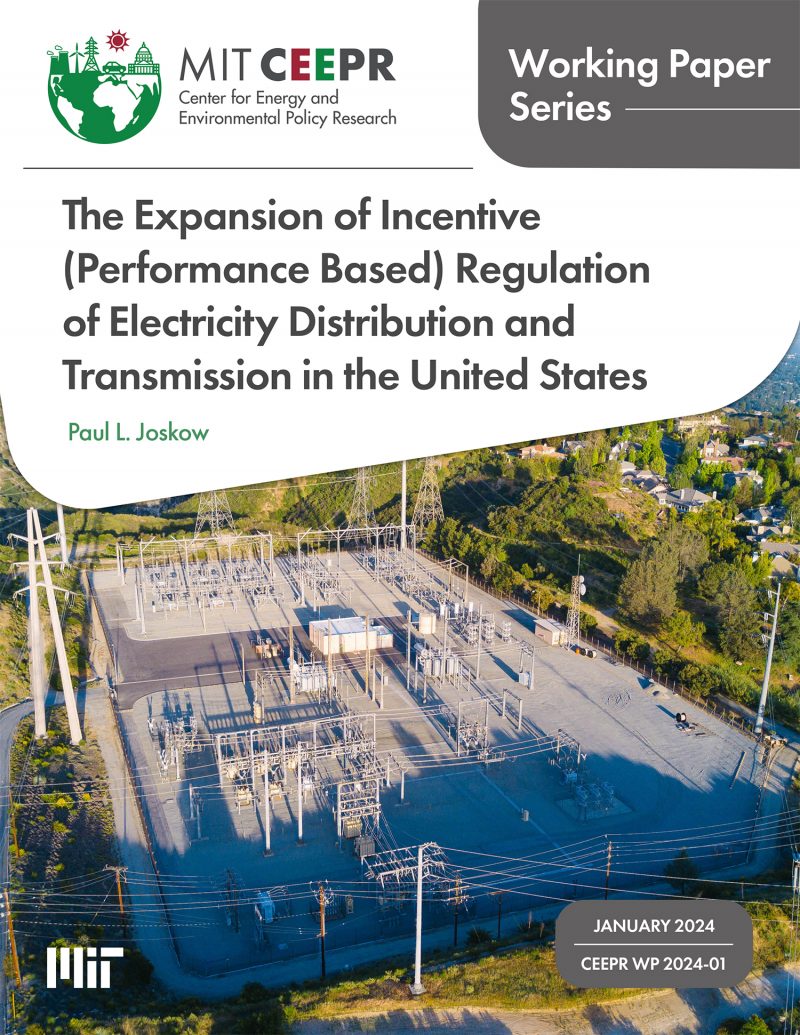The Expansion of Incentive (Performance Based) Regulation of Electricity Distribution and Transmission in the United States
Paul L. Joskow
January 2024
I examine developments in the application of performance-based regulation (PBR) to electricity distribution and transmission in the United States. Applications of comprehensive PBR to electricity distribution had been slow to diffuse in the United States prior to roughly 2000. PBR mechanisms are now being applied more frequently to electricity distribution, reflecting the changing structure of the electric power industry and the increasing obligations being placed on electric distribution companies. The new obligations are a consequence primarily of aggressive targets for decarbonizing the electricity sector in nearly half the states and the goal of using “clean” electricity to electrify transportation, buildings, and other sectors. PBR should be viewed as a set of “building blocks” that can be adopted in various combinations and should recognize that PBR and traditional cost of service regulation (COSR) are properly viewed as complements rather than substitutes. Recent reforms in the regulation of distribution companies in Great Britain, called RIIO, have been influential in the U.S. The main reforms contained in RIIO are discussed. There has been essentially no application of PBR by the Federal Energy Regulatory Commission (FERC) to owners of transmission assets or to independent transmission operators. FERC has applied targeted incentives to encourage investment in transmission facilities and membership in independent system operator organizations. However, the regulation of transmission rates relies primarily on COSR in the form of formula rates and has poor incentive properties. Regulation of independent system operators is a challenge because they are non-profit organizations. Reforms here are suggested.
Keywords: electricity, electricity distribution, electricity transmission, incentive regulation, cost-of-service regulation
JEL Codes: L94, Q48, D470
Acknowledgements
I am grateful to David Sappington and Dennis Weisman for extensive comments on earlier drafts of this paper. Michael Pollitt provided very useful information to me about the regulatory reforms in Great Britain (RIIO) and directed me to OFGEM’s voluminous archive of information about the RPI-X@20 review, RIIO-1 and RIIO-2. Stephen Littlechild also provided useful comments and discussions with Hannes Pfeifenberger and Joe DeLosa clarified a number of issues related to FERC regulation of transmission revenue requirements. I am also grateful for support from the MIT Energy Initiative and the Economics of Energy Fund in the MIT Department of Economics.
The final version of this paper will appear in a special issue of the Review of Industrial Organization edited by David Sappington and Dennis Weisman.



